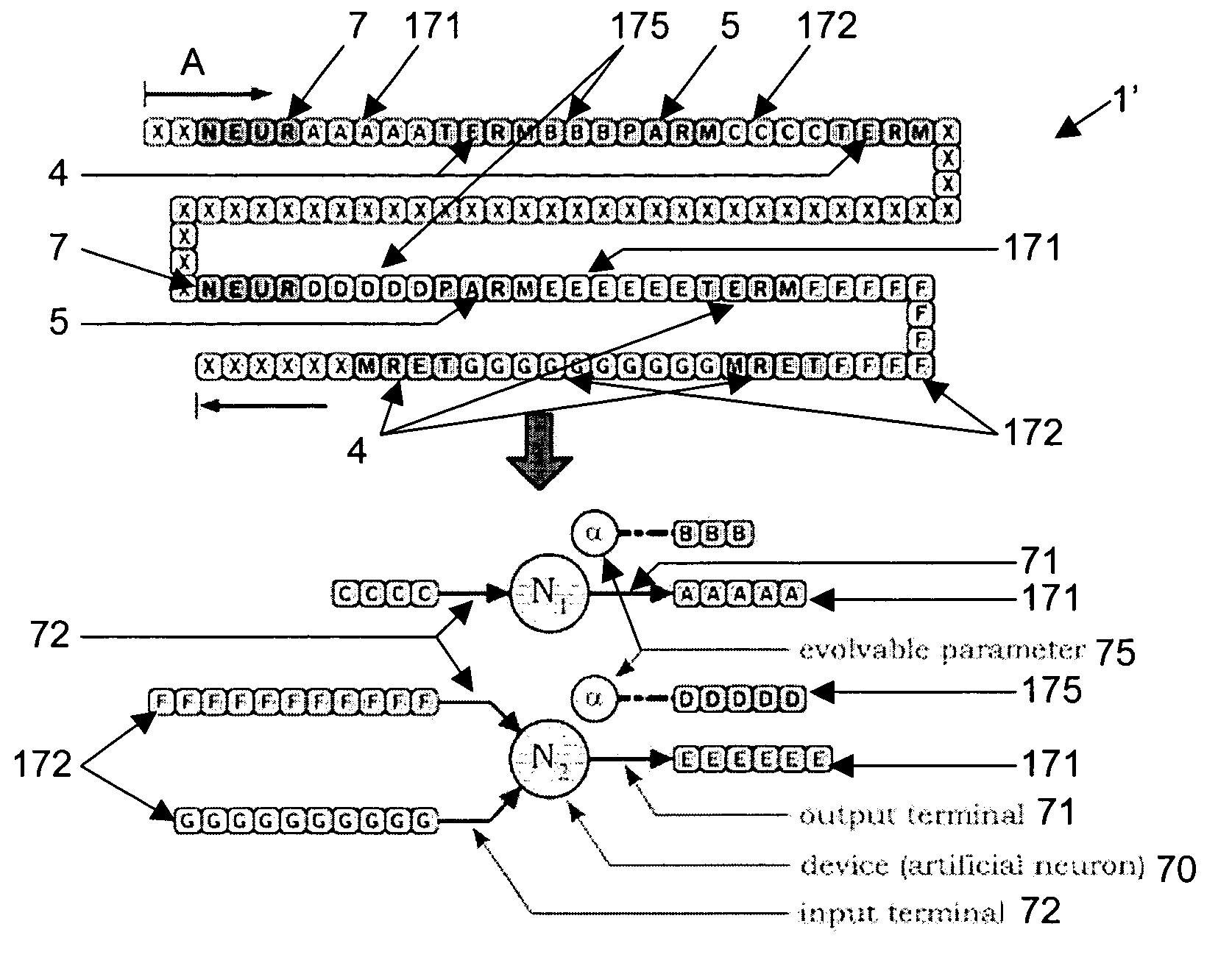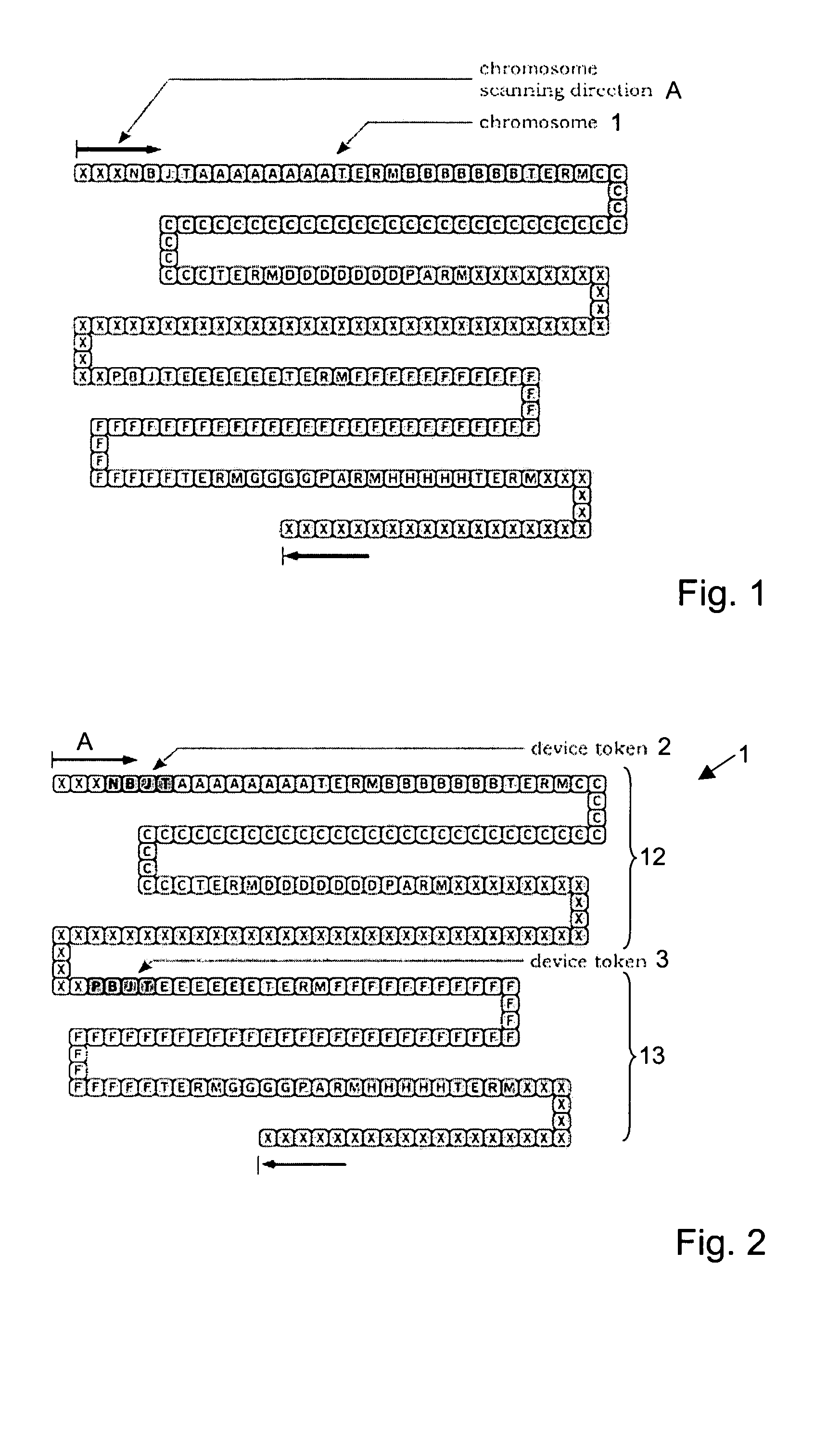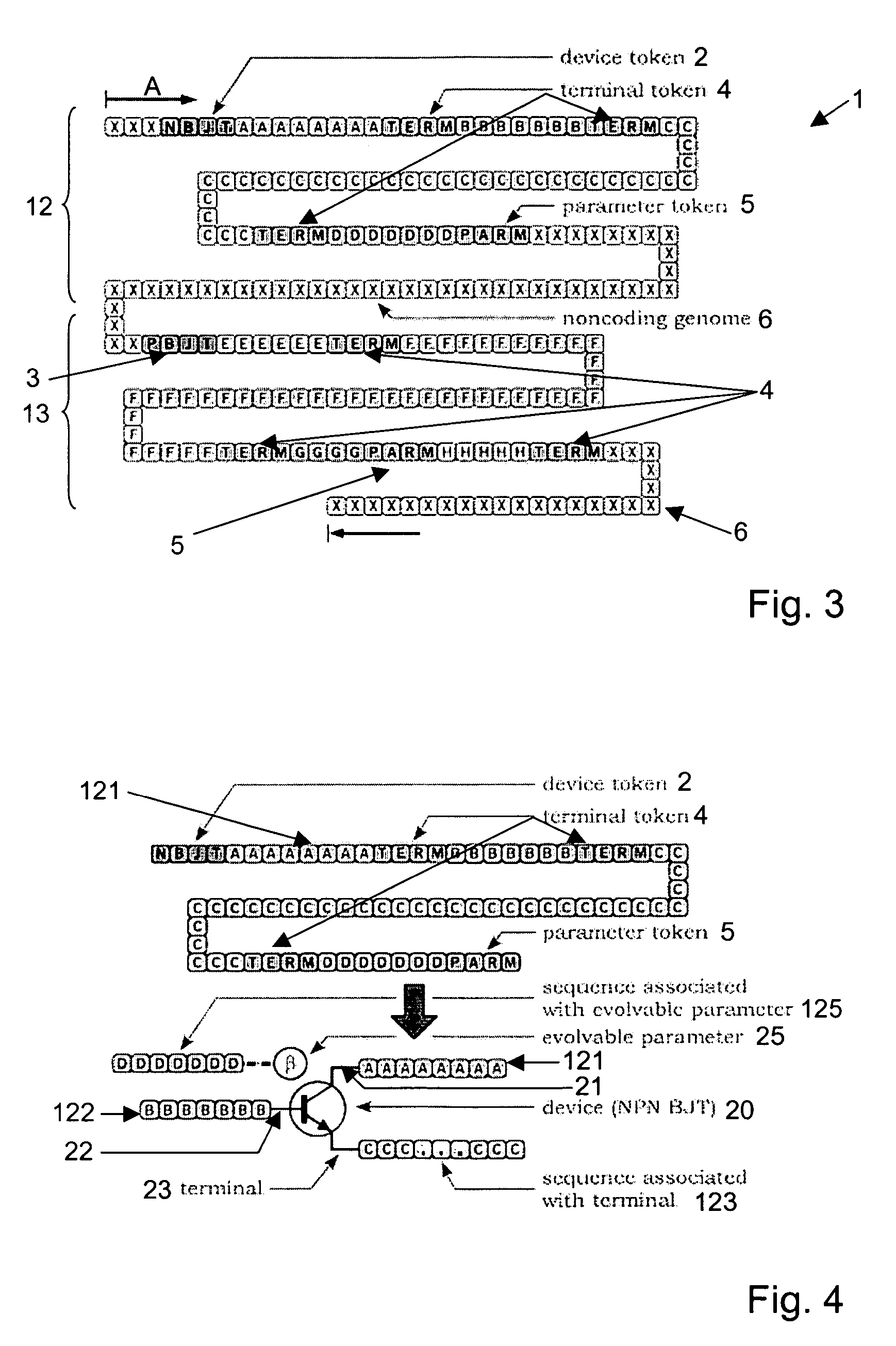Method and device for evolving a network using a genetic representation
a genetic representation and network technology, applied in the field of genetic representation of artificially evolvable networks, can solve the problems of lack of convincing methodology for achieving incremental increase of complexity during evolution, lack of real open-ended evolutionary process, and little chance of leading to radical innovation, so as to achieve efficient evolution process
- Summary
- Abstract
- Description
- Claims
- Application Information
AI Technical Summary
Benefits of technology
Problems solved by technology
Method used
Image
Examples
example
[0116]Let us consider how a network-specific interaction map
[0117]
from a range of integer sequence alignment scores i to a set of conductance values g complying with these indications can be actually defined. Let us assume a logarithmic quantization of the conductance range determining a set of discrete conductance values having nd elements per decade of conductance value. We denote by g0 the zero-valued conductance, by gmin the minimum non null value of conductance, by gmax the maximum finite value of conductance, and by g∞ the infinite-valued conductance. The sequence of conductance values corresponds to
{g0, gmin, αgmin, α2gmin, . . . , αnd−1gmin, 10gmin, 10αgmin, . . . , gmax, g∞}
[0118]where α=101 / nd. Denoting by ns the number of elements in the subsequence {gmin, . . . , gmax} (that is, the number of discrete conductance values excluding the connection with infinite conductance represented by g∞ and the absence of connection represented by g0), gmax must satisfy the condition gm...
PUM
 Login to View More
Login to View More Abstract
Description
Claims
Application Information
 Login to View More
Login to View More - R&D
- Intellectual Property
- Life Sciences
- Materials
- Tech Scout
- Unparalleled Data Quality
- Higher Quality Content
- 60% Fewer Hallucinations
Browse by: Latest US Patents, China's latest patents, Technical Efficacy Thesaurus, Application Domain, Technology Topic, Popular Technical Reports.
© 2025 PatSnap. All rights reserved.Legal|Privacy policy|Modern Slavery Act Transparency Statement|Sitemap|About US| Contact US: help@patsnap.com



